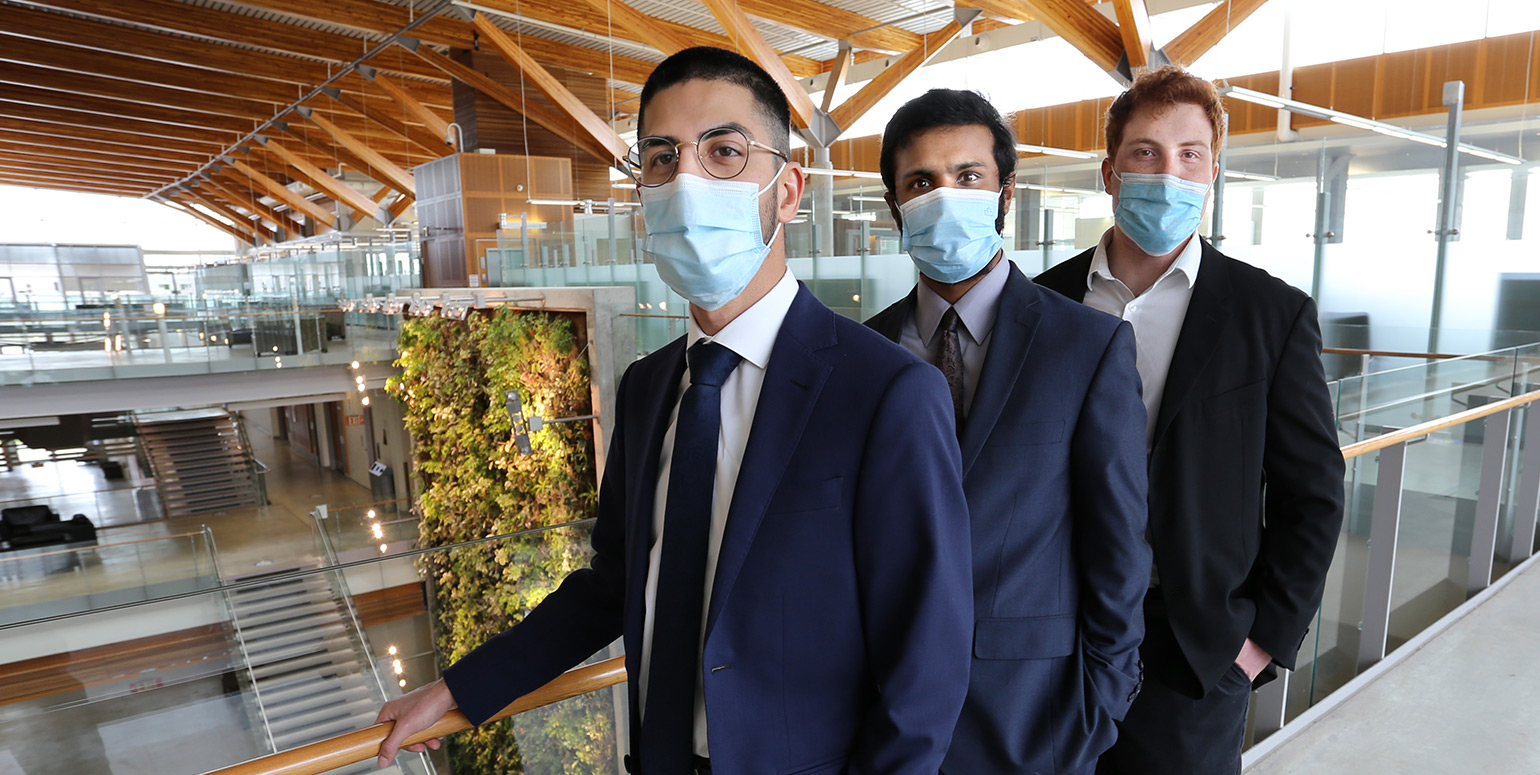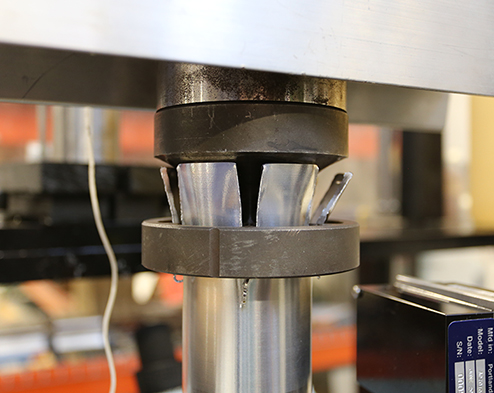
Being taken out of their engineering comfort zone and into the unchartered waters of marketing challenged the winners of the Proteus Innovation Competition to employ a whole new mindset.
The contest requires teams to create a viable commercialization strategy for a promising technology, in hopes of winning a cash prize of up to $5,000. Contestants hone their business skills, work with a variety of experienced advisors, and accelerate the commercialization process of discoveries coming out of Ontario universities.
A Windsor team led by postdoctoral fellow John Magliaro and including grad students Anthony Gudisey and Aryen Shakib took top honours with their business plan to commercialize professor Bill Altenhof’s “Kinetic Energy Dissipation System.”
 Dr. Altenhof’s patented technology is a system designed for energy dissipation in a broad range of applications such as vehicle crashes, military explosions, and fall-arrest systems.
Dr. Altenhof’s patented technology is a system designed for energy dissipation in a broad range of applications such as vehicle crashes, military explosions, and fall-arrest systems.
It is composed of a steel wheel with spoke-like blades as a cutting unit and a customized cylindrical sacrificial tube. During impact, the cutting unit will slice through the tube to provide stable and controllable energy dissipation resulting in efficient, uniform, and precise energy absorption that out-performs axial crushing, the current state-of-the-art system.
“The basis of the commercial plan was to launch a consulting and manufacturing firm to engineer and install made-to-order solutions that can satisfy the requirements of a diverse range of applications where energy absorption is needed,” says Dr. Magliaro. “Anywhere you have machinery, most often you will need energy absorbers. Things such as rail buffers, vehicles bumpers, elevator stops, and even on a smaller scale, such as safety harnesses in fall-arrest systems, are all possibilities.”
Working with a five-minute time constraint, the team had to distill key aspects of the system, its safety and economic benefits, and possible applications in the marketplace.
“I enjoyed developing the presentation and the hard limit of five minutes. Being able to embrace the idea of explaining what we do in that span of time to a broad audience was not easy but was very gratifying,” says Shakib, a master’s student of mechanical engineering. “The biggest challenge with the competition was taking what we do in terms of research and developing a business plan, the financial benefits of it and marketing it to the business world all within the timeframe.”
Gudisey, a doctoral candidate in mechanical engineering, says the group considered processes already in commercial use.
“We looked at the largest manufacturers in our field of energy absorbers,” he says. “How did they start out? What was their timeline? When did they break even? and things of that nature. And based off that, we developed our plan.”
Magliaro says he enjoyed viewing other teams’ presentations and appreciates the hard work they put into developing plans. He commended the presentation from the Windsor’s other group, led by Ghida Hamoud, and the variety of other participating universities’ proposals in fields such as health sciences and renewable energy.
“It was really nice to see a such a detailed showcase,” says Magliaro.
For more information on the Kinetic Energy Dissipation System, please contact Bill Altenhof.
To view the five-minute business plan, visit https://www.youtube.com/watch?v=xFOFLJRRpdo.
- Gam Macasaet
